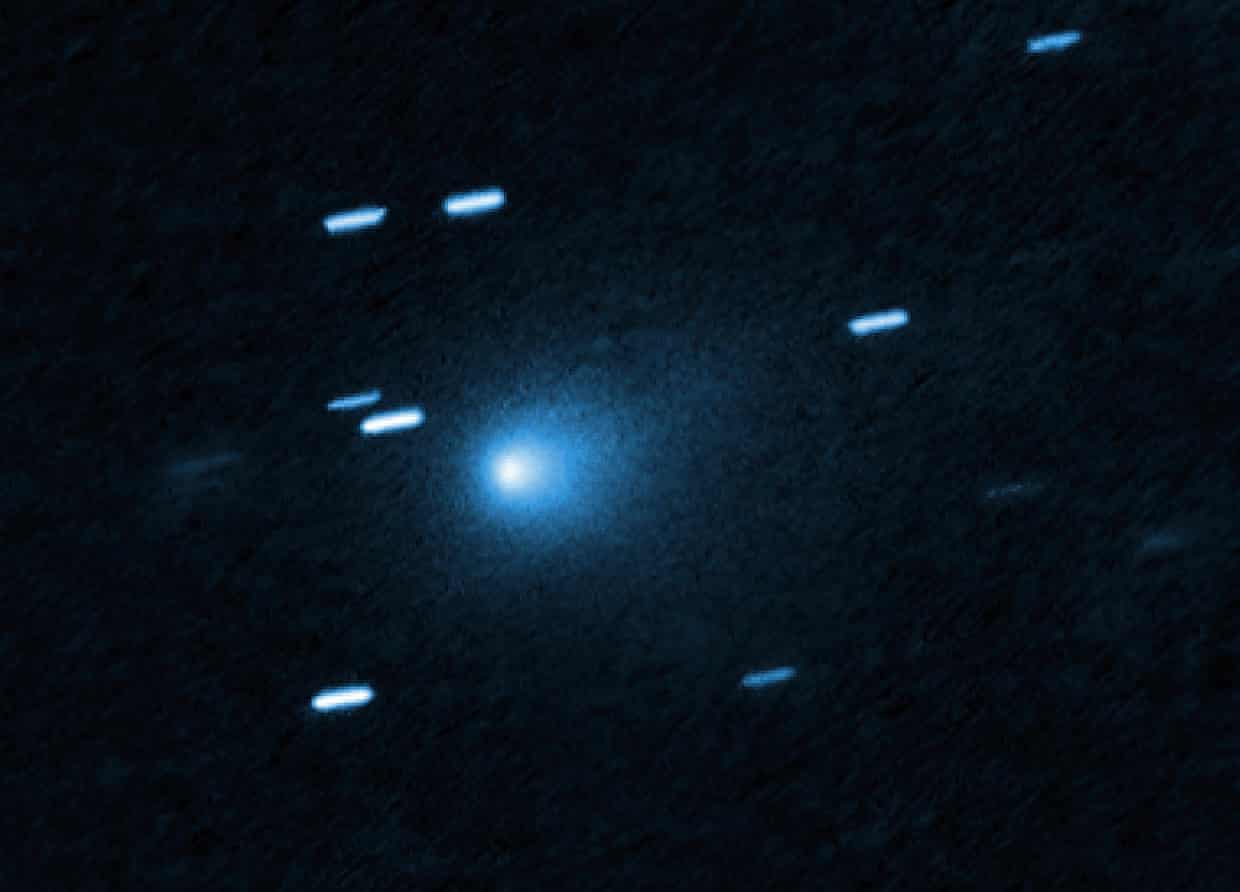A comet from outside our solar system, designated 3I/Atlas, is racing towards the sun at an astonishing speed of approximately 61 kilometers (38 miles) per second. First identified in July 2023, this object marks only the third known interstellar visitor to be observed, following ‘Oumuamua in 2017 and 2I/Borisov in 2019. The recent capture of its image by the Hubble Space Telescope has generated significant excitement among scientists, providing a unique chance to analyze its characteristics.
The name 3I/Atlas reflects its interstellar origin, with “3” signifying it as the third such object detected and “Atlas” representing the network of telescopes known as the Asteroid Terrestrial-impact Last Alert System that identified it. Scientists are particularly intrigued by the comet’s composition and trajectory. “We’ve never had an object like this to study before,” states Dr. Rebecca Allen, co-director of Swinburne’s Space Technology and Industry Institute.
Understanding 3I/Atlas
While the exact origins of 3I/Atlas remain unclear, researchers are confident it hails from outside our solar system. Dr. Laura Driessen, a radio astronomer at the University of Sydney, emphasizes that there is no evidence suggesting it is anything other than a comet. Speculation surrounding extraterrestrial implications, similar to that which surrounded ‘Oumuamua, has been dismissed. “There’s no evidence to point towards [3I/Atlas] being anything other than a really fun space rock that came from outside the solar system,” Driessen explains.
The Hubble images reveal a “fuzzy snowball” appearance, attributed to a “coma” formed as solar heat causes the comet’s surface to release dust and gas. As it approaches the sun, the chemical signatures of elements and molecules from its interstellar journey will become more pronounced. Allen notes, “We can use a tool called spectroscopy, and we can use light to actually understand exactly what that material is.” This analysis could provide insights into whether the comet originated from a solar system with conditions similar to our own.
Researchers have estimated the diameter of 3I/Atlas to be less than 5.6 kilometers, potentially as small as 320 meters. Its trajectory is notable as it travels at over 200,000 kilometers per hour. “It’s going to kind of cruise through the inner solar system—in between Mars and Earth’s orbit—and then it will fly past the sun,” Allen adds. This comet follows a hyperbolic orbit, meaning it is not gravitationally bound to the sun and will eventually exit the solar system.
The Journey Ahead
3I/Atlas is projected to make its closest approach to the sun between October and December 2023, coming within approximately 210 million kilometers. The closest point to Earth will be around 270 million kilometers away. “We’re not really sure where it’s going to end up until it comes around from the other side of the sun and starts heading out to the outer solar system again,” notes Con Stoitsis, comet and meteor director at the Astronomical Society of Victoria.
As for visibility, while currently faint, 3I/Atlas is expected to brighten as it nears the sun, potentially becoming observable through larger amateur telescopes. Stoitsis warns, however, that it may only appear as a smudge. “We get bright-ish comets three or four times a year that are visible with small telescopes and binoculars. This is definitely not one of those,” he cautions, emphasizing the need for a decent-sized telescope to catch a glimpse of this remarkable interstellar visitor.
As scientists continue to monitor 3I/Atlas, its journey through our solar system promises to provide valuable insights into the nature of interstellar objects and the origins of our own solar system.





























































